
Qualcomm’s return to Windows on ARM is gaining momentum, and ASUS is leading the charge with its new ASUS Zenbook A14 (UX3407), one of the first laptops powered by the Snapdragon X series. With Microsoft’s Copilot+ AI deeply integrated and a fresh push toward native app support, this device feels like a proper reboot for Windows on ARM, and it’s exciting to see.
ASUS Zenbook A14 UX3407 Specifications
- Qualcomm Snapdragon X | Snapdragon X Elite
- Qualcomm Adreno GPU
- Qualcomm Hexagon NPU up to 45TOPS
- 32GB LPDDR5X Memory
- 1TB M.2 NMVe PCIe 4.0 SSD
- 14″ ASUS OLED | IPS, 16:10 WUXGA, 100% DCI-P3, TÜV Rheinland-certified, SGS Eye Care Display, HDR TrueBlack 600 (OLED), 60Hz Refresh Rate
- Ports: 2x USB C 4.0 Gen 3, 1x USB A 3.2 Gen 2, 1x HDMI 2.1, 1x 3.5mm Combo Audio Jack
- Full HD Webcam: Windows Hello, AI-powered
- Connectivity: Bluetooth 5.4, Wi-Fi 7
- Battery: 48Wh (Snapdragon X, IPS) | 70Wh (Snapdragon X Elite, OLED)
- Dimension: 31.07 x 21.39 x 1.34~1.59 cm
- Weight: 890g (Snapdragon X, IPS) | 980g (Snapdragon X Elite, OLED)
- Colors: Zabriskie Beige | Iceland Gray
- Price: RM 4,999 (Snapdragon X, IPS) | RM 5,999 (Snapdragon X Elite, OLED)
- Where to buy: Lazada | Shopee
Design & Build: Lighter Than Light
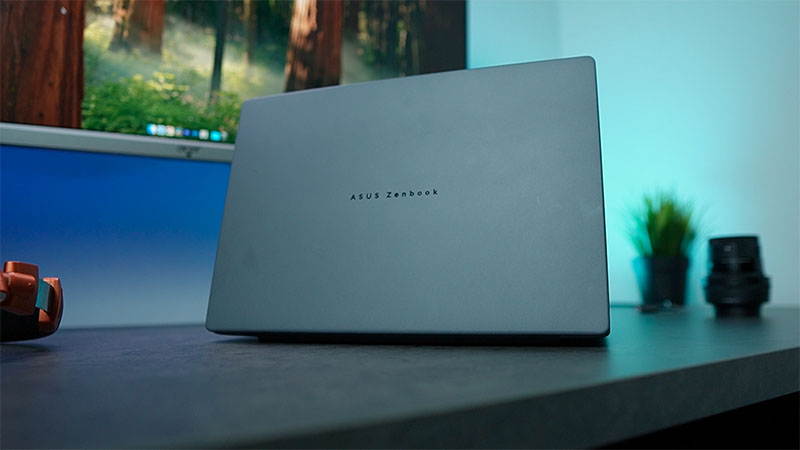
At under 900 grams, the ASUS Zenbook A14 earns its crown as the World’s lightest 14” Copilot+ laptop. ASUS achieved this by using Ceraluminium, a new hybrid material that fuses ceramic with aluminum; 30% lighter and 3x stronger than regular aluminum. It’s also resistant to scratches, shocks, and smudges, and has a smooth sandstone-like texture.
Despite the featherweight frame, it’s no pushover. This laptop meets the US MIL-STD 810H for durability.
The design is minimal, classy, and clearly takes inspiration from the MacBook in a good way; advanced 14″ OLED display, comprehensive ports selection, and lighter than the 13″ MacBook Air.

The ASUS branding is subtle, with a clean “Zenbook” inscription on the lid and a small monogram logo inside.

Display, Keyboard, & Portability
My review unit (UX3407RA) features a 14” WUXGA ASUS OLED display, a larger 70Wh battery, and the powerful Qualcomm Snapdragon X Elite chip. It weighs just 980g even with all that hardware boast.
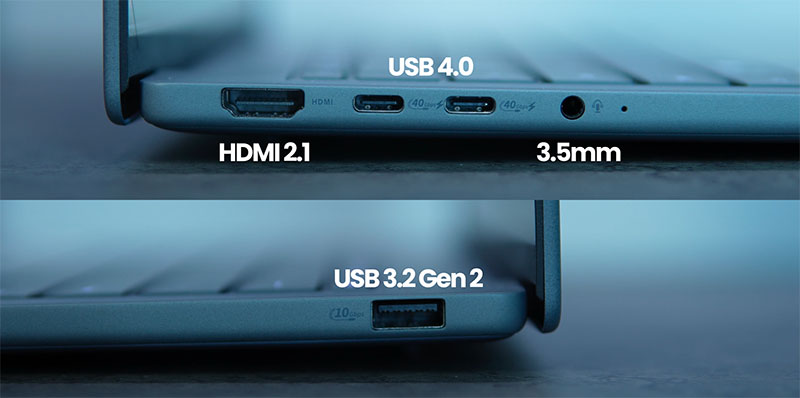
The display is vibrant and sharp, and ASUS smartly moved the USB-C ports to the left, avoiding interference with accessories like wireless mice when plugged in. Opening the lid is smooth too, thanks to a clever EasyLift hinge that reduces resistance.
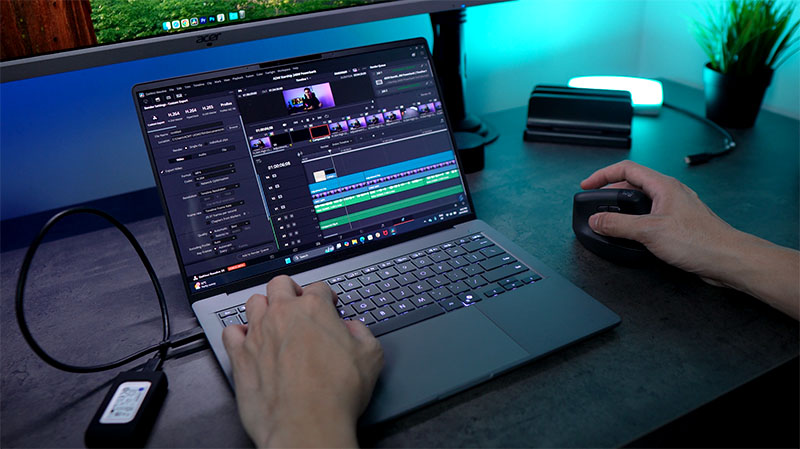
Typing is satisfying with 1.3mm key travel, gentle concave keycaps, and a backlit layout. hey’re comfortable to type on, with subtle tactile feedback.
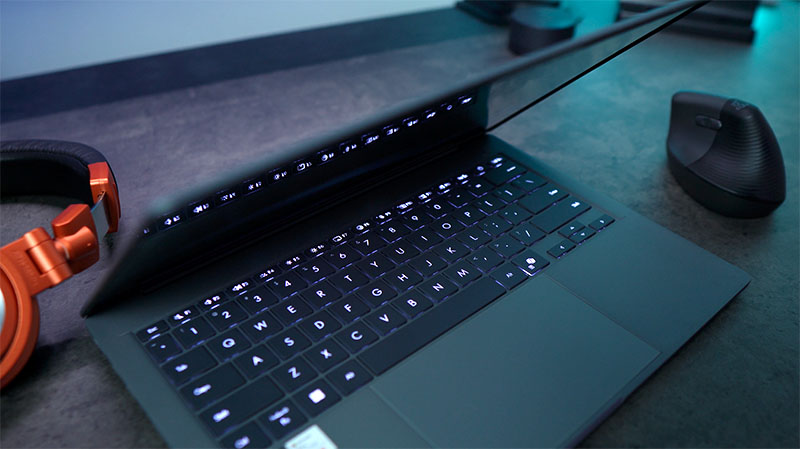
The large touchpad supports Smart Gestures.
- Vertical Right Swipe: Volume Control
- Vertical Left Swipe: Display Brightness
- Horizontal Top Swipe: Fast Forward / Rewind Video
- Swipe Inward from Top Right Corner: Launch XpertScreen Control Center
Webcam, AI Features, and Security
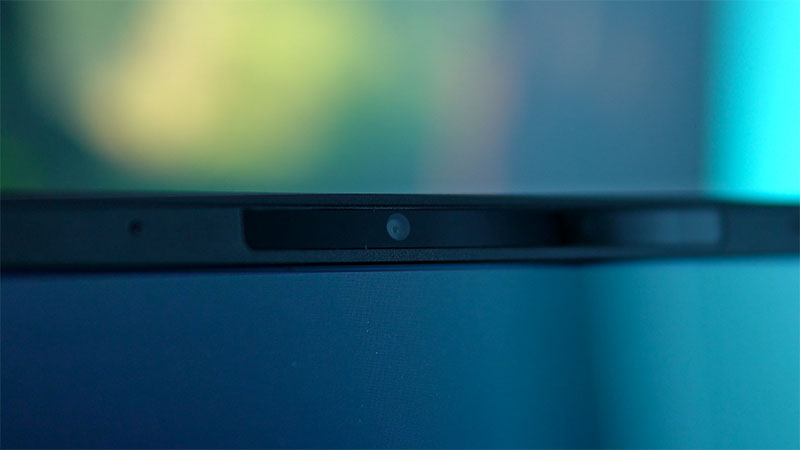
The ASUS Zenbook A14 features a Full HD IR webcam with Windows Hello, backed by smart features like Adaptive Dimming (dims when you’re not looking) and Adaptive Lock (locks when you step away). Both enhance battery life and privacy.
Performance: Snapdragon X Elite in Action
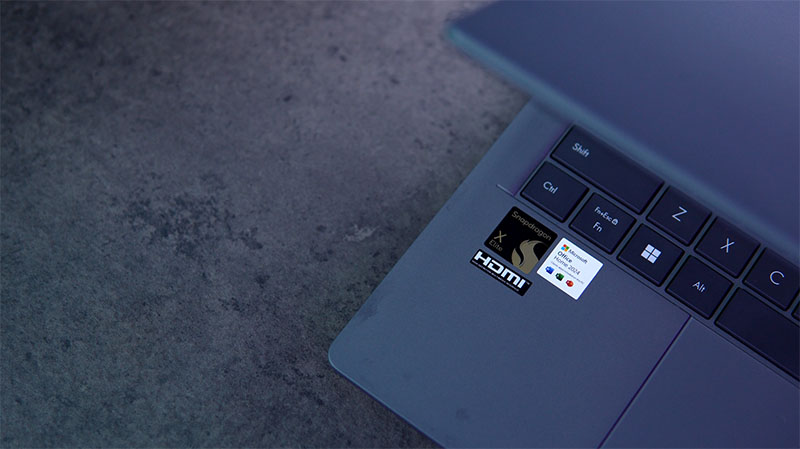
Under the hood is the Qualcomm Snapdragon X Elite X1E-78-100, a 12-cores, 12 threads chip with an integrated Adreno GPU and Hexagon NPU. The unit also has 32GB LPDDR5X RAM, 1TB NVMe SSD, Wi-Fi 7, and Bluetooth 5.4.
App compatibility is no longer a deal-breaker. Many major productivity apps now run natively on Windows ARM (check WorksOnWoA). Non-optimized apps run through the Prism x86 emulation layer using the Prism x86 Emulation engine, which Qualcomm claims is highly efficient on the Snapdragon X platform.
Gaming? It’s good for casual players. According to NasiLemakTech, modern titles run without major issues.
I tested DaVinci Resolve which runs Windows on ARM natively, and while 4K editing pushed its limits, switching to performance mode and lowering playback resolution made things smooth enough for basic editing workflows. I can then upscale it to 4K before exporting.
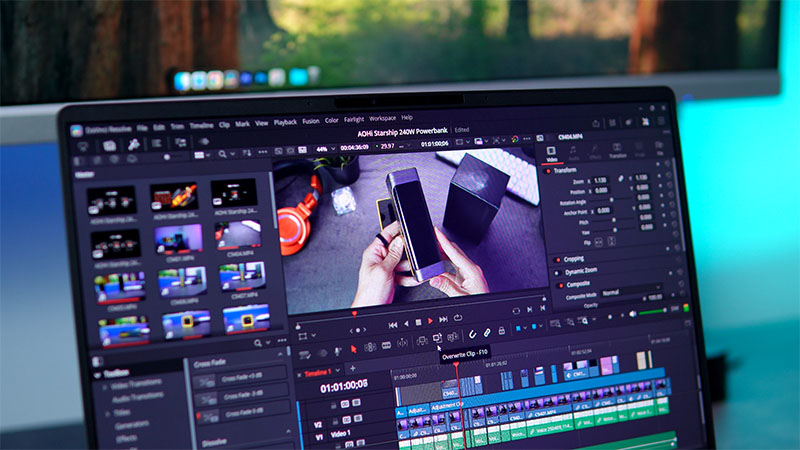
Even better, performance stays consistent unplugged, with no noticeable drop, thanks to ARM’s energy efficiency.
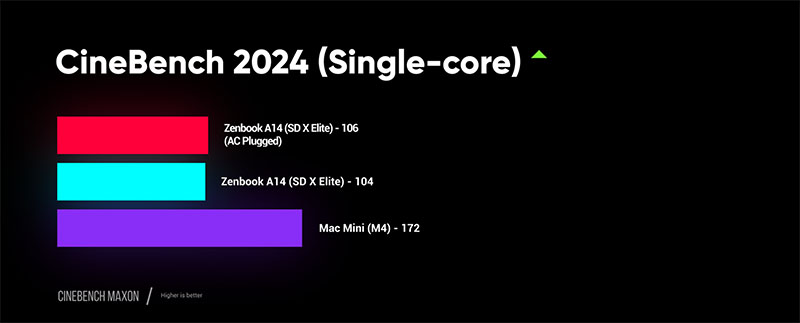
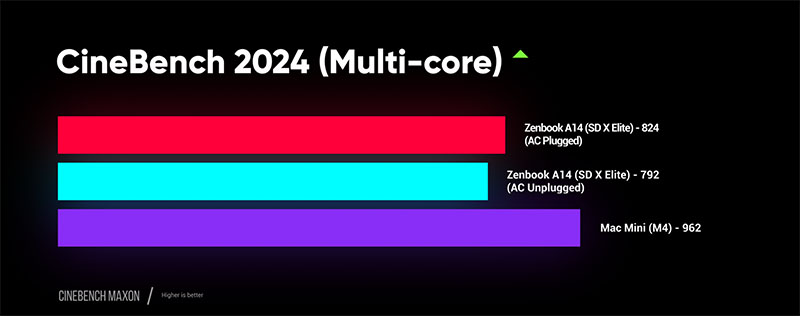
Thermals & Battery Life
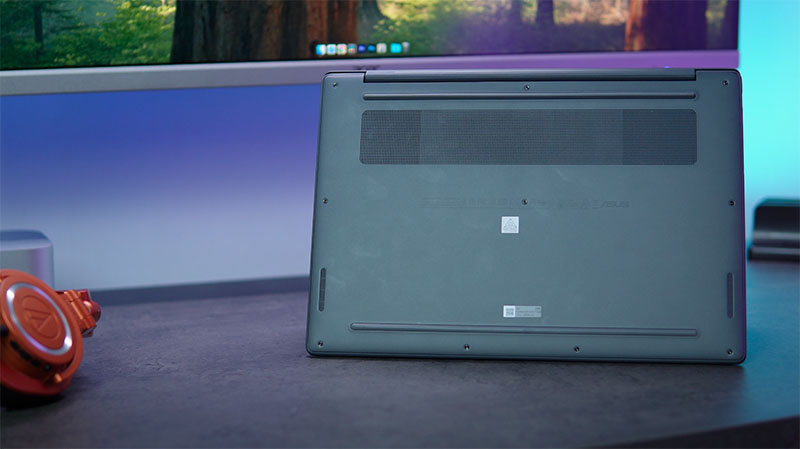
The ASUS Zenbook A14 barely gets warm, even under stress, and fan noise is whisper-quiet. The cooling setup, dual silent fans and efficient chip design keeps things under control without throttling.
Battery life is a major win. ASUS claims up to 29 hours, and in my usage, I got:
- 20 hours over 2–3 days of casual use like web browsing and video streaming
- 7–8 hours during continuous DaVinci Resolve video editing
Something Intel or AMD laptops can’t match, even with a 90Wh battery.
Value & Verdict
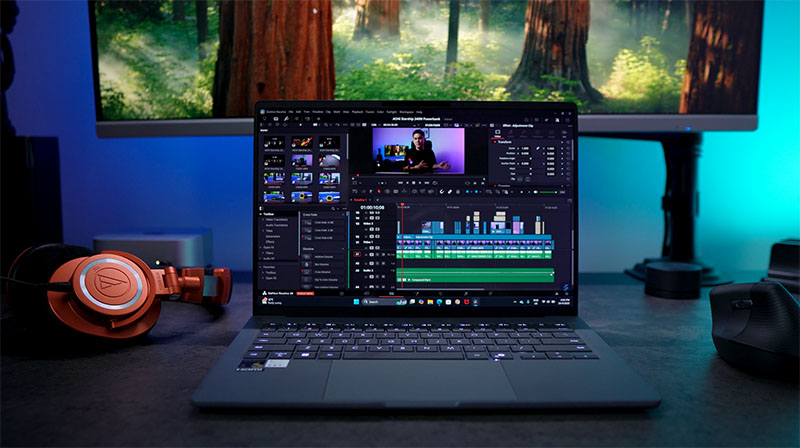
The Snapdragon X powered with IPS display and a 48Wh battery priced at RM 4,999, while this ASUS OLED plus Snapdragon X Elite variant is at RM 5,999. Compared to Apple’s MacBook Air M4, the ASUS Zenbook A14 offers a much better display, more ports, and significantly lighter weight.
Yes, the MacBook still leads in raw CPU and GPU performance. However, the ASUS Zenbook A14 feels like the MacBook Air of the Windows world, offering an ultra-light, durable, and AI-powered experience that finally makes Windows on ARM a compelling choice. It’s the future of Windows on ARM, done right.
Learn more: ASUS Zenbook A14 UX3407
